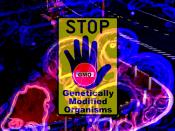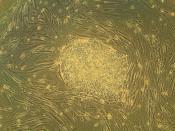Introduction
A transgenic species refers to an organism whose genome has been deliberately modified by the transfer of one or more genes from another organism. This changes an organism's genetic composition and its physical characteristics artificially, as opposed to through gene mutations and artificial selection. There are a number of methods used to create transgenic species but as transgenic technology is still relatively new, most of these however, are still in a developmental stage. Transgenic technology has enabled scientists to break through the 'species barrier', overcoming limitations or selective breeding. There are many uses for transgenic species, there are a number of ethical concerns with the procedure, limiting its current usage. Transgenic organisms can be created in animals, plants and bacteria, mice are currently the most used species in transgenics due to their short generation time and well defined genetics
Method
There are a number of different methods for obtaining and transferring genes to create a transgenic organism.
The three main methods of creating transgenic organisms are:
1. Embryonic stem cell- mediated gene transfer
'This method involves prior insertion of the desired DNA sequence by homologous recombination into an in vitro culture of embryonic stem (ES) cells.' Stem cells are undefined and are the basis of the development of all structures within an organism. An advantage of this method is that it allows for a more precise targeting of defined mutations in the gene via homologous recombination.
2. DNA microinjection
This method involves the direct microinjection of one or a number of genes from one organism into another. The gene is injected into the pronucleus of a fertilised ovum. The ovum is inserted into the ovaduct of the female that has been induced to act as a recipient by mating with a vasectomised male. The injection of DNA is...
![[New York Bank Note Co. notice] (LOC)](https://s.writework.com/uploads/17/171683/new-york-bank-note-co-notice-loc-thumb.jpg)


Transgenic species
You have written a good essay on an interesting topic. I agree that transgenic technology has value and a great deal of potential. Of course, the possibility of abuses also exist and safeguards need to be instituted to prevent them. Your report was well documented and researched. The bibliography should prove useful to those who wish to do further research in this area. Your use of headings made your paper easier to read. Quality work!
5 out of 5 people found this comment useful.